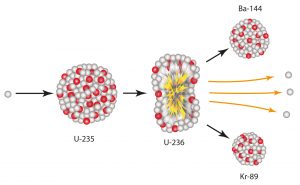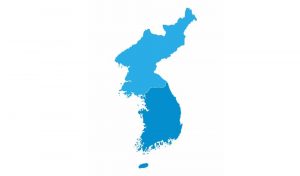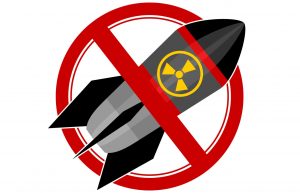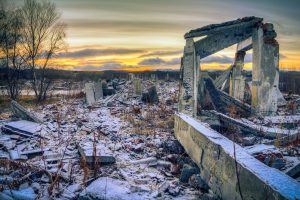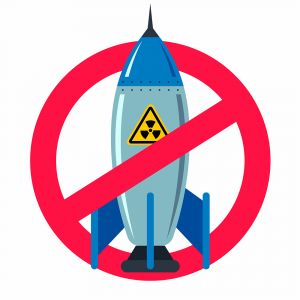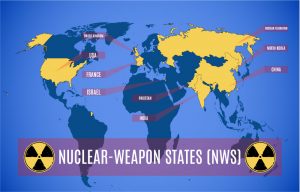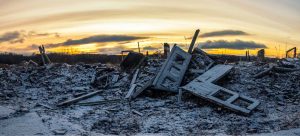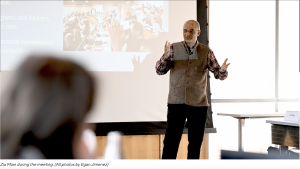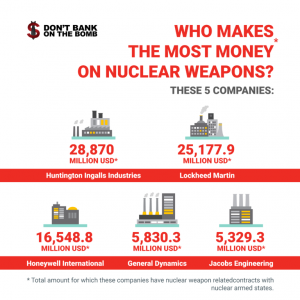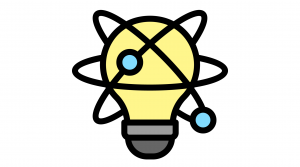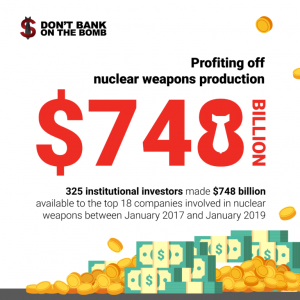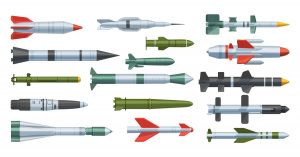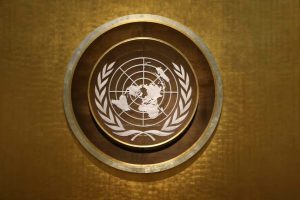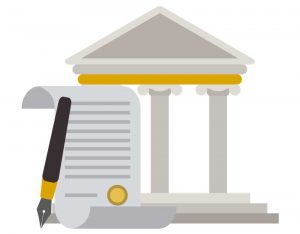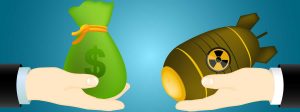- A City Guide to DivestmentDivesting from producers of controversial weapons: a guide for local authorities.
- Banning Nuclear Weapons: The Humanitarian FactsAn evidence-based understanding of the humanitarian impact of nuclear weapons has become the driving force behind a renewed State and civil society demand for effective action to prohibit and eliminate nuclear weapons.
- Beyond the Bomb: these investors are rejecting nuclear weaponsOur research shows more and more financial institutions are saying no to nuclear weapons.
- Call Your Bank for DivestmentIf your bank, insurer or pension-fund is listed in the report, you can help increase the pressure on them to drop their investments in nuclear weapons by giving Customer Service a call, and letting them know that you, as a client or shareholder, are watching and expect better of them.
- Checklist for a Good Financial Institution Investment PolicyOnce financial institutions make the decision to put a nuclear weapons free policy into place, there are some key aspects to consider.
- Engage the Public on DivestmentDivestment campaigning is a way to engage the general public and a way for people to feel connected to creating change.
- Engaging the MediaEngaging media through the angle of a divestment campaign can help to bring attention to other issues related to nuclear weapons.
- EntanglementNuclear and non-nuclear weapons and systems are becoming increasingly entangled, raising the risks of inadvertent escalation in a conflict. How can these dangers be mitigated?
- Evaluating Member State Acceptance of Blockchain for Nuclear SafeguardsDistributed ledger technology (DLT)–widely referred to as blockchain technology–has the potential to improve operational efficiencies, data security, and confidentiality of nuclear safeguards information.
- Future of Arms ControlBilateral arms control between the United States and Russia now rests entirely on New START, which will expire in 2026 if not sooner. What steps could build on this treaty, and how can China and other nuclear states be brought into the arms control process?
- Greater ThanHow might the nuclear threat reduction field become one of the brightest sources of creativity and innovation on the planet?
- ICRC Nuclear Weapons ResourcesThe International Red Cross and Red Crescent Movement calls on States to ensure nuclear weapons are never used again.
- International Panel on Fissile MaterialsThe IPFM was founded in January 2006 and is an independent group of arms-control and nonproliferation experts from both nuclear weapon and non-nuclear weapon states.
- Issues by the Center for Arms Control and Non-ProliferationNuclear issues, news, and analysis by the Center for Arms Control and Non-Proliferation.
- Korean PeninsulaNorth Korea’s evolving nuclear arsenal presents a complex security challenge. What can states and international organizations do to reduce immediate nuclear risks while planning for a longer term disarmament process?
- No First Use of Nuclear WeaponsUnder no circumstances should the United States start a nuclear war.
- Nuclear Disarmament & Public HealthThe Health and Humanitarian Case for Nuclear Disarmament
- Nuclear Disarmament Resource CollectionMore than seven decades after their development and use during World War II, nuclear weapons continue to be the basis for several states’ national security policies.
- Nuclear Famine: climate effects of regional nuclear warA nuclear war using as few as 100 weapons anywhere in the world would disrupt the global climate and agricultural production so severely that the lives of more than two billion people would be in jeopardy from mass starvation.
- Nuclear Notebook: How many nuclear weapons does Pakistan have in 2021?Nuclear Notebook: How many nuclear weapons does Pakistan have in 2021? Editor’s note: The Nuclear Notebook is researched and written by Hans M. Kristensen, director of the Nuclear Information Project with the Federation of American Scientists, and Matt Korda, a…
- Nuclear Policy Takes a Deep Dive Into BlockchainTechnology Could Ease Information Sharing Among Distrustful Parties
- Nuclear Weapons AbolitionSince the very beginning of the nuclear age, with the US atomic bombings of Hiroshima and Nagasaki, physicians have recognized that the devastating consequences of nuclear war can only be prevented if these weapons of mass destruction are abolished.
- Nuclear Weapons AbolitionPSR’s Nuclear Weapons Abolition Program amplifies the health professional voice to increase and broaden grassroots support for nuclear weapons abolition and to cultivate legislative initiatives to reduce the threat of nuclear weapons.
- Nuclear Weapons WorldwideThousands of nuclear weapons exist in the world. The use of even one could change life as we know it.
- Nuclear Winter ResearchAlan Robock’s Nuclear Winter Research Dr. Alan Robock has compiled a comprehensive list of resources, including his own nuclear winter research, as well as other resources, to help the public and scientists understand the threat of nuclear weapons.
- Physicians and Nuclear WarPhysicians first confronted the medical consequences of the use of nuclear weapons while struggling to care for the victims of the US atomic bombings of Hiroshima and Nagasaki in 1945.
- Princeton School on Science and Global SecuritySGS hosts the Princeton School on Science and Global Security, which brings together next-generation scientists and engineers from around the world to learn technical and policy perspectives on how to reduce and end the threat from nuclear weapons.
- Producing mass destructionResearch shows at least at least US$ 116 billion (€ 102 billion) in contracts between governments and private companies in France, India, Italy, the Netherlands, United Kingdom, and the United States for production, development and stockpiling of nuclear weapons.
- Reducing the Risk of Nuclear WarSteps and policies to reducing the risk of nuclear war.
- Renovating the Nuclear OrderThe system of treaties, agreements, and institutions underpinning the nonproliferation regime is increasingly stressed by burgeoning arms races and growing discord over the lack of progress toward disarmament. What steps can be taken to halt, and if possible, reverse this trend?
- Rethinking racism, exclusion and domination in nuclear security studiesRethinking racism, exclusion and domination in nuclear security studies Princeton University’s Program on Science and Global Security (SGS) has created and maintains a bibliographic archive of interdisciplinary scholarly and other works exploring and countering the expression of structural racism and…
- Science & Global SecurityScience & Global Security is an international journal for peer-reviewed scientific and technical studies to support international security, arms control, disarmament, and nonproliferation policy.
- Security and Arms Control WebinarsThe Summer Symposium hosts security experts from across the globe, speaking on technical issues related to global security.
- Security SpendingThe Center for Arms Control and Non-Proliferation supports the optimization of national security spending by curbing wasteful, ineffective, and unnecessary spending.
- Shorting our security- Financing the companies that make nuclear weaponsWho is trying to profit from weapons of mass destruction? Our report: Shorting our security- Financing the companies that make nuclear weapons provides the answer.
- Stanley Center PublicationsStanley Center Publications
- Status of World Nuclear ForcesInstead of planning for nuclear disarmament, the nuclear-armed states appear to plan to retain large arsenals for the indefinite future, are adding new nuclear weapons, and are increasing the role that such weapons play in their national strategies.
- Steps to Take Action for DivestmentThis page provides the basis for coordinated campaigning to discourage financial institutions from investing in nuclear weapons companies.
- The FAS Nuclear Weapons PageThe Nuclear Information Project provides the public with reliable information about the status and trends of the nuclear weapons arsenals of the world’s nuclear-armed countries.
- The Humanitarian Impact of Nuclear WeaponsHumanity might well not survive a nuclear war using even a fraction of the arsenals in existence today.
- The Militarization of Artificial IntelligenceRevolutionary technologies hold much promise for humanity. When taken up for military uses, they can affect international peace and security.
- The Nuclear NotebookThe Nuclear Notebook is co-authored by Hans M. Kristensen and Matt Korda and published bi-monthly in the Bulletin of the Atomic Scientists. Each issue provides a snapshot of a nuclear-armed country weapons programs or a global nuclear weapons matter.
- The U.N. Treaty on the Prohibition of Nuclear WeaponsEverything you need to know about the Treaty on the Prohibition of Nuclear Weapons.
- The World’s Nuclear WeaponsLearn more about all of the countries that support nuclear weapons.
- Treaty on the Prohibition of Nuclear WeaponsThe International Humanitarian Movement for Nuclear Disarmament
- U.S. Nuclear PolicyThe United States faces a series of critically important decisions on nuclear procurement, posture, and declaratory policy. Which policies will best ensure effective deterrence while minimizing the risks of escalation and arms racing?
- US Missile DefenseUnproven, unaccountable, and unhelpful for reducing the nuclear threat.
- Voters Strongly Support a “No First Use” Nuclear PolicyThe President should declare that the United States will never start a nuclear war.
- Why Divest? A Focus on Financial Institutions5 reasons financial institutions should divest from nuclear weapons producers.
- Why Divest? A Focus on GovernmentsGovernments can set norms, negotiate international law and national legislation.
Other Recommended Reading
Center for the Study of Existential Risks
Autonomy and machine learning at the interface of nuclear weapons, computers and people
Don’t Bank on the Bomb
Building on the Ban: Increasing impact by decreasing investment
Forbidding financing: a prohibition on the financing of nuclear weapon producers
HOW TO DISMANTLE THE ABSURD PROFITABILITY OF NUCLEAR WEAPONS
Federation of American Scientists
SIPRI Yearbook: Armaments, Disarmament and International Security
Global Zero
Urgent Steps to De-Escalate Nuclear Flashpoints
ICAN
Enough is Enough: 2019 Global Nuclear Weapons Spending
Schools of Mass Destruction: American Universities in the U.S. Nuclear Weapons Complex
Nuclear Weapons Ban Monitor 2019
Nuclear Weapons Ban Monitor 2018
Unspeakable Suffering: The Humanitarian Impact of Nuclear Weapons
ICRC
THE EFFECTS OF NUCLEAR WEAPONS ON HUMAN HEALTH
Model law for the treaty on the prohibition of nuclear weapons
Treaty on the Prohibition of Nuclear Weapons – Ratification kit
IPPNW
Nuclear Famine: 2 Billion People at Risk?
Abolition of Nuclear Weapons Campaign Material and Research
Nuclear Narrative
Employing Intersectional Messages to Increase Engagement and Action in Reducing Nuclear Threat
One Earth Future
Open Nuclear Network Publications
Physicians for Social Responsibility
Publications by Physicians for Social Responsibility
Union of Concerned Scientists
China’s Nuclear Force: Modernizing from Behind
The Risk of Nuclear War with China: A Troubling Lack of Urgency
The SM-3 Block IIA Interceptor: A New Arms Control Challenge
The New “Low-Yield” Submarine-based Nuclear Warhead










